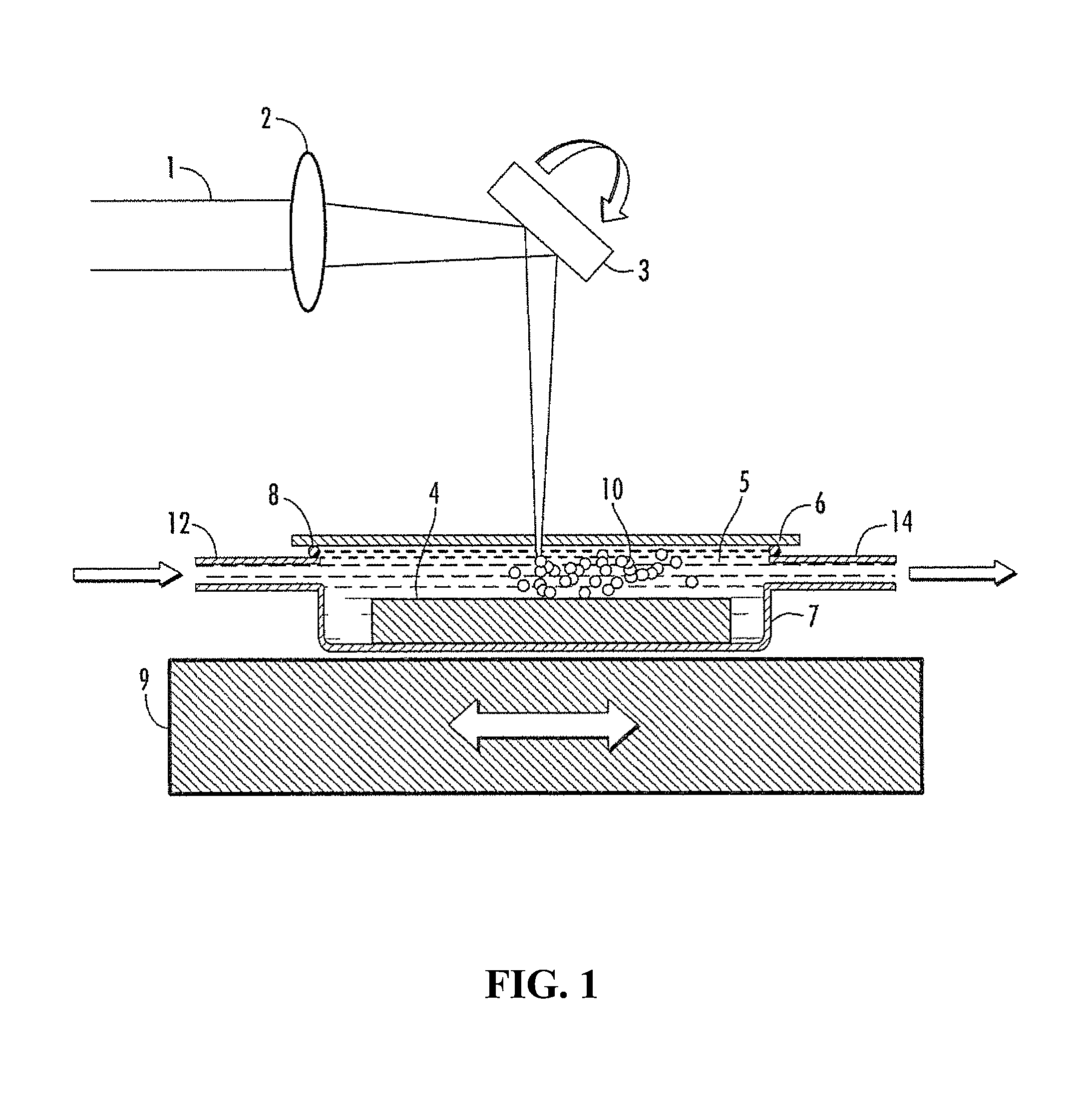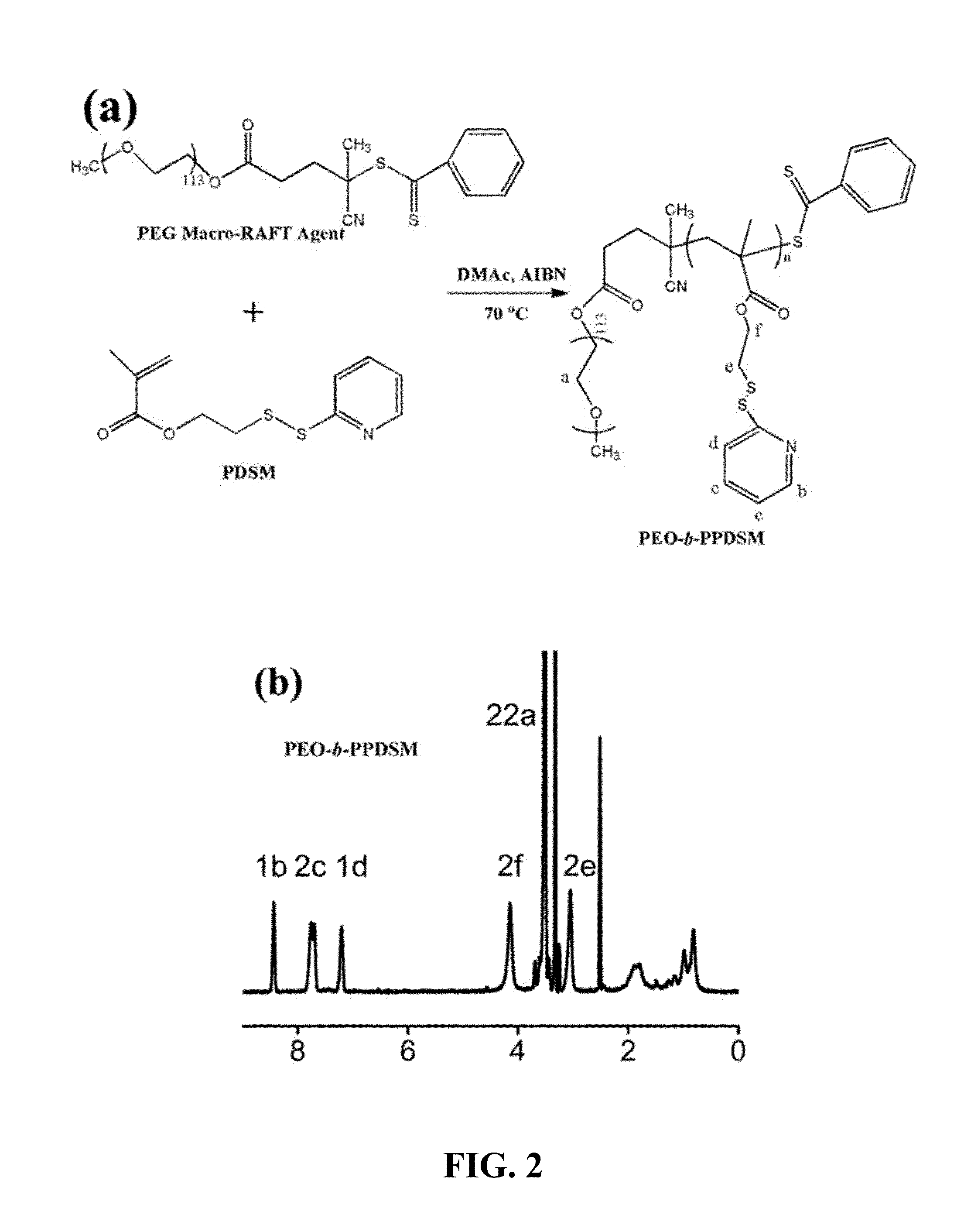Nanoparticles coated with amphiphilic block copolymers
a technology of amphiphilic block and copolymer, which is applied in the direction of inorganic non-active ingredients, instruments, transportation and packaging, etc., can solve the problems of poor stability of gold nanoparticles, non-specific binding to various cells and tissues, and most of them are not functional for further ligand conjugation, etc., and achieve uniform size and high stability
- Summary
- Abstract
- Description
- Claims
- Application Information
AI Technical Summary
Benefits of technology
Problems solved by technology
Method used
Image
Examples
example 1
[0058]The thiol-reactive amphiphilic block copolymer poly(ethylene oxide)-block-poly(pyridyldisulfide ethylmethacrylate) (PEO-b-PPDSM) contains pyridyldisulfide functional groups, as shown in the scheme of FIG. 2a, was synthesized by reversible addition fragmentation chain transfer (RAFT) polymerization using PEO (Mn 5000 g / mol) macro-RAFT agent.
[0059]All the reagents used for synthesis of thiol-reactive amphiphilic block copolymer polyethylene oxide)-block-poly(pyridyldisulfide ethylmethacrylate) (PEO-b-PPDSM)were purchased from Aldrich chemical company and were used as received, unless otherwise mentioned. 1H and 13C NMR were taken in Varian 400 MHz NMR spectrometer, UV visible spectra were recorded in a BioTek micro plate reader (Synergy 2) for aqueous solutions and UV-3600 (Shimadzu) for organic solutions. Molecular weight and molecular weight distribution of the copolymer was estimated by gel permeation chromatography (GPC) with THF as the eluent (flow rate=1.0 mL / min) using PS...
example 2
[0088]One of the most important advantages of these polymer coated gold nanoparticles is that the resultant nanoparticles have neutral surfaces but can be further conjugated without any modifications to the nanoparticles. It was hypothesized that surface functionlization can be achieved through thiol-disulfide exchange reactions with the PDSM groups (J. Am. Chem. Soc. 2010, 132, 8246). To test this, polymer coated gold nanoparticles were treated with thiol-modifed FITC.
[0089]Preparation of Thiol-Modified FITC:
[0090]A mixture of FITC (20 mg, 0.052 mmol), cystamine dihydrochloride (6.0 mg, 0.026 mmol) and triethylamine (26.0 mg, 0.26 mmol) was dissolved in DMSO (800 μl) and stirred for 4 h. To this reaction mixture was added tris(2-carboxyehtyl)phosphine hydrochloride (17.6 mg, 0.062 mmol) and stirred for 1 hour. The resultant mixture was precipitated in ethyl ether and washed with water. The crude product was used for polymer coated gold nanoparticles surface modification without fur...
PUM
| Property | Measurement | Unit |
|---|---|---|
| temperature | aaaaa | aaaaa |
| temperature | aaaaa | aaaaa |
| temperature | aaaaa | aaaaa |
Abstract
Description
Claims
Application Information
 Login to View More
Login to View More - R&D
- Intellectual Property
- Life Sciences
- Materials
- Tech Scout
- Unparalleled Data Quality
- Higher Quality Content
- 60% Fewer Hallucinations
Browse by: Latest US Patents, China's latest patents, Technical Efficacy Thesaurus, Application Domain, Technology Topic, Popular Technical Reports.
© 2025 PatSnap. All rights reserved.Legal|Privacy policy|Modern Slavery Act Transparency Statement|Sitemap|About US| Contact US: help@patsnap.com



